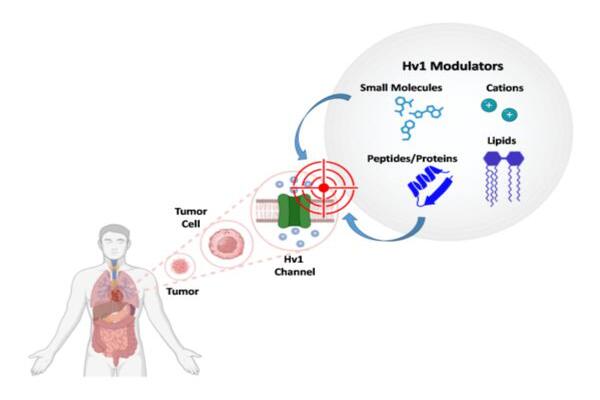
Hv1 is present in many human cells, including immune cells, sperm, and cancer cells. In tumors, cancer cells often build up too much acid because of the way they produce energy and cope with stress. Hv1 helps remove this excess acid, allowing cancer cells to survive, grow, and adapt to their environment. This makes Hv1 not only a potential marker for detecting cancer but also a promising target for new therapies. Researchers have found two main ways to influence Hv1: by blocking it (using inhibitors) or by boosting its activity (using activators). Many different substances can block Hv1, such as small molecules, peptides, and lipids, while only a few activators are known, including albumin and some natural compounds. The exact way some of these substances work is well understood, but others remain unclear. Because Hv1 plays such an important role in how cells respond to stress and disease — especially in cancer and inflammation — drugs that specifically block or activate it could become powerful tools for treating serious illnesses. DOI